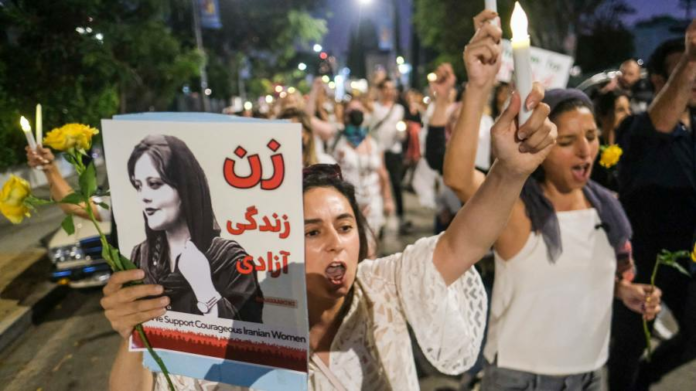For almost a month, young Iranians — working women and men, university students and school pupils — have stood up to the Islamic republic’s security forces to keep alive a wave of extraordinary protests triggered by the death of a young woman in police custody. The world has watched in awe as brave women have publicly removed and even burnt their hijabs, knowing full well the possible consequences.
Their defiance has drawn a countrywide wave of support, uniting disparate groups. And a young generation that has only known life under the Islamic republic and grown up in the internet age has displayed a steely determination to actively repudiate the central tenets of the theocracy.
The regime and its ageing, conservative leadership has clearly been rattled by Iran’s most vocal protests in years, which have underscored the level of anger many feel towards the oppressive system. However, the regime has a history of surviving crises and is ruthlessly efficient in stamping out dissent. Officially, more than 40 people have been killed in the unrest, although the full death toll is expected to be higher: security forces have used live ammunition, batons and tear gas against protesters.
Men, and even certain religious factions, have voiced support for the protests, which have rippled out across Iran, from Kurdistan to Tehran and beyond. Citizens’ frustration has elided into anger in a country where, partly because of western sanctions but also chronic government mismanagement, 30 per cent of people live below the poverty line and inflation officially stands at 42 per cent. The demonstrations are now about more than the death of Mahsa Amini or the imposition of the hijab: protesters are openly calling for a more democratic and secular system.
Amini’s death, though, was the match to light a tinderbox. A prospective student visiting Tehran from a traditional family in Kurdistan, Amini, 22, was dressed conservatively when she was taken by the notorious morality police, who enforce a strict dress code. She was not seen again until lying comatose in hospital. Her story resonated with a population who saw in her an everywoman. Even President Ebrahim Raisi, a hardliner, said she felt like his own daughter. The authorities denied that there was any physical violence. But such is the deep distrust many Iranians have for their leaders, the official version of events was widely dismissed.
Iran enjoys a healthy culture of protest, despite authorities’ apparatus of repression and control. But the current unrest constitutes the first major mass outcry over the hijab since the early days of the 1979 Islamic revolution; a symbol of a regime that has enforced strict restrictions on women. In recent years women, particularly in Tehran, have felt increasingly comfortable wearing their scarves loosely or even on their shoulders. There has, though, been a fresh crackdown on dress under Raisi as hardliners assert their authority.
The Islamic republic has a well-honed instinct for survival, but even if these protests do dissipate, the anger and disillusionment that fuelled the unrest will continue to fester. The unrest has underlined the deep distrust that exists between the theocracy and many of its people, particularly among the young in a country where about half of the population is aged below 40.
The regime must end all violence against protesters. Hardliners, who have taken control of all arms of the state since Raisi’s 2021 election, are unlikely to make major concessions. Yet for the sake of the beleaguered nation and its long-suffering population, they ought to heed the anguished voices of brave young Iranians risking their lives and liberty to take to the streets.






